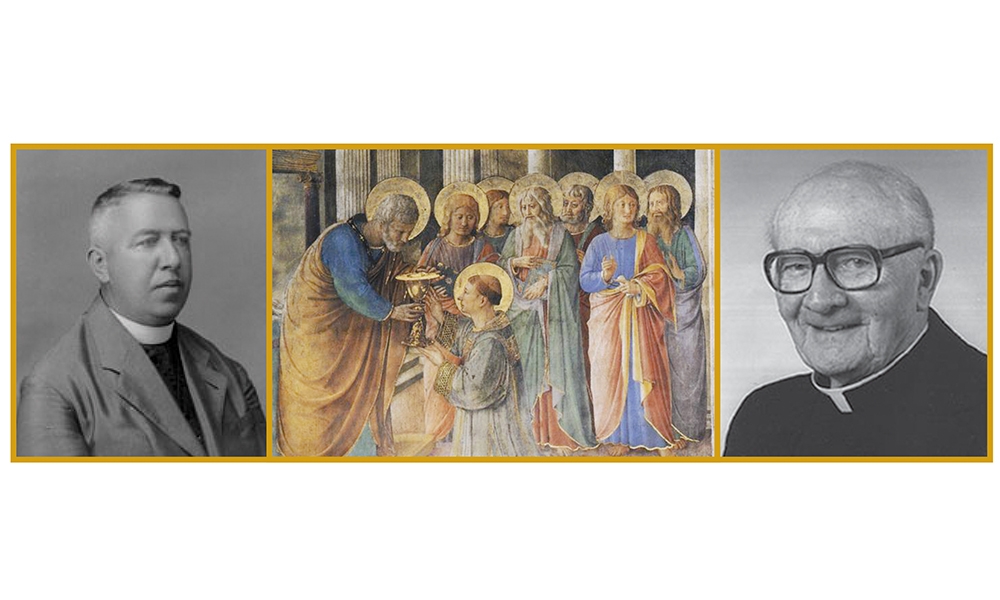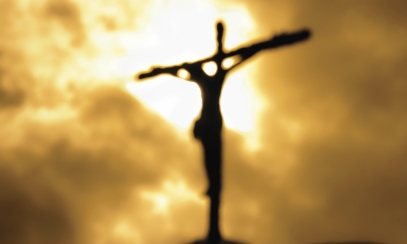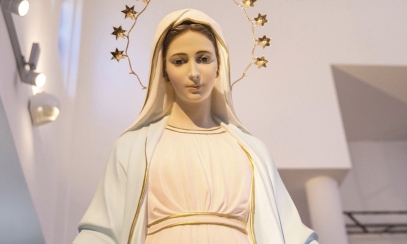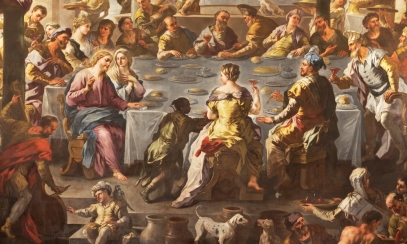
Nazis, Saints and Martyrs
The Mysterious World of Deacons
The Mysterious World of Deacons
What does a concentration camp in Nazi Germany have to do with the history of the permanent diaconate in the Diocese of Saginaw?
What does a concentration camp in Nazi Germany have to do with the history of the permanent diaconate in the Diocese of Saginaw?
We have to go back to the spring of 1938 to appreciate the historical connection. Two months after Germany annexed Austria in the Anschluss, an Austrian priest named Father Matthias Spanlang was arrested on May 24 and taken to the Dachau concentration camp along with four other priests. This marked the beginning of the priesterblock (priests’ barracks) at Dachau. Eventually, more than 2,000 clergymen filled three blocks at this notorious camp. God, however, is able to bring out something good from even the most horrific tragedies.
In this unlikely setting, ongoing conversations began about the idea of restoring the permanent diaconate in the Latin Rite of the Catholic Church. A number of the priests imprisoned at Dachau believed that having ordained Catholic clergy living and working directly among the people may have been helpful in combating the spread of fascism in Europe. These conversations would eventually come to fruition when Catholic bishops attending the Second Vatican Council voted in favor of restoring the diaconate as a permanent order in the Latin Rite of the Catholic Church on Sept. 29, 1964 – a step that was subsequently approved by Pope St. Paul VI.
For a very different reason, the spring of 1938 was also a momentous time for the city of Saginaw and the surrounding region. Just eight days after Father Spanlang’s arrest, Bishop William F. Murphy was installed as the first bishop of the newly-created Diocese of Saginaw on June 1, 1938.
His next two successors, Bishop Stephen S. Woznicki and Bishop Francis F. Reh, would both take part in the Second Vatican Council, which, as mentioned, endorsed the restoration of the permanent diaconate. As part of his plan to implement the reforms of Vatican II, Bishop Reh then took the step of establishing the Permanent Deacon Formation Program in the Diocese of Saginaw on Sept. 14, 1972. The dream of a restored permanent diaconate once discussed at Dachau was now a reality in mid-Michigan.
In my role as the coordinator of permanent diaconate formation and ministry, I am blessed to work with the current deacons, candidates and their wives, all of whom continue to be an inspiration to me. In a special way, it has been a gift to get to know the first men ordained to the permanent diaconate after its establishment in the Diocese of Saginaw, some of whom are featured in this issue’s cover story: Deacons Mike Arnold, Larry Fussman and David Adler. I thought this would be an ideal time to share a few aspects of this less well-known vocation in the Church.
One of the deacons recently asked to serve on a Vatican commission, Deacon Dominic Cerrato, observed that the vocation and role of deacons have not yet fully entered the Catholic imagination in our county. Hopefully, these brief points will help in that regard.
Interesting facts about deacons
Why does God want Deacons in the Church?
In The Heart of the Diaconate, Deacon James Keating sums up the vocation of the deacon. Each deacon is called to be a living manifestation of the servant mysteries of Christ – in other words, a living, sacramental icon of Christ the Servant. Keating insists that this vocation requires “a deep interiority, a ministry sustained by conscious communion with the Trinity.” The deacon is called to serve, just as Jesus came to serve and not be served. The three main ways that deacons serve in the Church are the ministries of evangelization, of charity and of worship. A deacon has one foot in the life of the Church as a member of the clergy and one foot in the world, where he often works in a lay profession. In this way, the deacon is a bridge between the Church and “the people in the pews.”
Who created the Order of Deacons?
The origins of the diaconate go back to the Last Supper, when the Lord Jesus instituted the sacrament of Holy Orders, which includes the ordination of bishops, priests and deacons.
Who were the first deacons in the Church?
The disciples “chose Stephen, a man filled with faith and the Holy Spirit, also Philip, Prochorus, Nicanor, Timon, Parmenas, and Nicholas of Antioch, a convert to Judaism. They presented these men to the apostles who prayed and laid hands on them.” (Acts 6:5-6)
Who are some examples of well-known deacons?
The first Christian martyr after Pentecost was a deacon, St. Stephen! He was such a powerful, Spirit-filled evangelizer that he was stoned to death. Two other well-known deacon saints are St. Francis of Assisi and St. Lawrence, who was martyred in Rome in 258.
Can deacons be married?
Permanent deacons may be married before ordination, but after ordination they typically will not be allowed to marry a second time if their wife should die. In the Latin Rite of the Catholic Church, transitional deacons cannot be married because they are preparing to be priests.
What is the difference between a permanent deacon and a transitional deacon?
Permanent deacons are often married and are not moving towards priestly ordination. Transitional deacons are on track to be ordained to the priesthood.
Are permanent deacons paid ministers in the Church?
No – permanent deacons serve on a completely volunteer basis, receiving no salary. However, if a deacon is hired for a paid role on a diocesan or parish staff, he receives compensation for his job.
When was the permanent diaconate restored in the Latin Rite of the Catholic Church?
In the Eastern Rites of the Catholic Church, the permanent diaconate has never disappeared. But by the 7th century, in the Latin Rite of the Catholic Church, the permanent order of deacons had given way to simply a transitional diaconate (often for less than one year) on the path to priesthood, rather than as the distinct order which existed in the early Church. The bishops at Vatican II voted in favor of restoring the diaconate as a permanent order in the Latin Rite of the Catholic Church. Then, on June 18, 1967, Pope St. Paul VI released an apostolic letter, Sacrum Diaconatus Ordinem, providing the general norms for restoring the permanent diaconate in the Latin Rite.
In the spring of 1968, the U.S. Conference of Catholic Bishops voted to petition the Holy See to restore the permanent diaconate in the United States and received papal approval on Aug. 30, 1968. The permanent diaconate has since had a major impact on the Church in dioceses around the world, as the number of deacons has steadily grown. The first permanent deacon in the Diocese of Saginaw, Deacon Ray O'Rourke, was ordained in 1971 by Bishop Reh.
How is a deacon distinct from a lay ecclesial minister?
A lay ecclesial minister can do many of the ministries of service that a deacon carries out; but through his ordination, a deacon is a member of the clergy with a permanent character on his soul, forever marked to be a sacramental sign of Christ the Servant. Unlike a lay person, the deacon is an ordinary minister of the sacraments of Baptism and the Eucharist, including proclaiming the Gospel at Mass and giving homilies.
How is a deacon distinct from a priest?
Both are members of the clergy, as are bishops. However, whereas bishops and priests are ordained to minister "in the person of Christ the Head" (in persona Christi Capitis), deacons are ordained to be sacramental signs of Christ the Servant. A deacon is neither a "mini-priest" nor a glorified layman. Diocesan priests and deacons are called to support, and collaborate with, their bishop.
Do you sense a call to serve as a deacon in the Diocese of Saginaw? Do you know of any men who have a servant’s heart and might be good deacons? Please contact the Office of the Permanent Diaconate at diaconate@diosag.org, call 989-797-6662 or visit saginaw.org/deacons.
Dr. Dan Osborn is the Diocesan Theologian and Coordinator of Permanent Diaconate Formation & Ministry for the Diocese of Saginaw.



